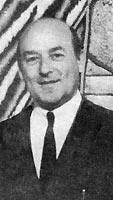 |
As
a boy, he manifested a definite aptitude for painting and
drawing. He attended the Academy of Fine Arts and the
University of Rome, where he also learned architecture.
Would he become a painter or an architect?
L. F. Massa did not betray his disposition for painting
and chose Paris as his artistic headquarters. He met Jean
Cocteau and was admitted to the entourage of Matisse,
Bonnard, Picasso, Dufy, Von Dongen and Le Corbusier.
Matisse became his teacher but Massa was able to develop
his own personality rather than be influenced by the great
masters.
In Berlin and in Weimar (where he illustrated Wagner's
works) his knowledge of architecture helped him immensely.
He collaborated with Serge Diaghilew in the presentation of
Strawinsky's opera and in the Parade by Cocteau. His work for
the theater was a collateral activity to painting which was
his main occupation.
His talent became known through exhibitions in Italy,
France, Germany, America, USSR, U.K., Argentina and the Far
East. Some of his oil paintings can be found in museums and
private collections of those countries.
When following his extraordinary evolution from the very
inception one is impressed by his ability in developing his
way of
seeing things and his whole art. He followed the Paris
school closely but in 1933 he was already painting in the
futurist style. Hurrah for futurism. His modern paintings
are more of a post impressionistic style but he has
maintained a rare personality with a taste for equilibrium
and harmony. There is equilibrium in the structure of his
compositions and there is harmony in his lines and colours. |